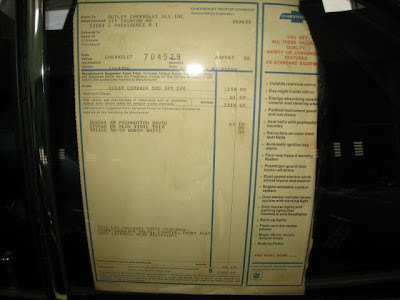The automotive landscape is undergoing a profound transformation, largely driven by the urgent necessity for more sustainable and efficient vehicles. One of the noteworthy players in this pivotal evolution is the 2017 Ford Escape, which boasts fuel efficiency that is not only competitive but also promising for environmentally conscious consumers. As we delve into the intricacies of the Ford Escape’s gas mileage and fuel economy, we uncover a vehicle that serves as a reflection of changing priorities in the transportation sector.
At the outset, let us explore the engine options offered in the 2017 Ford Escape. Consumers were presented with a choice of three engines, each tailored to provide a unique driving experience while emphasizing fuel efficiency. First, the standard 2.5-liter four-cylinder engine offers a commendable balance of power and practicality. With an estimated fuel economy of 21 miles per gallon (mpg) in the city and 29 mpg on the highway, it sets a reliable foundation for those navigating urban environments as well as longer road trips.
Moving to the next tier, the 1.5-liter EcoBoost engine is a testament to Ford’s commitment to innovation. This turbocharged engine significantly enhances performance without sacrificing efficiency, boasting a notable 23 mpg in the city and 30 mpg on the highway. Such figures resonate with consumers who seek a spirited drive while remaining cognizant of their carbon footprint. This shift toward turbocharged engines exemplifies the broader trend within the automotive industry: the desire for efficiency through advanced engineering.
Furthermore, the crowning jewel of the Escape’s powertrain options is the 2.0-liter EcoBoost engine. This more robust variant provides not just capability, but also impressive fuel efficiency. While it unleashes 245 horsepower, it manages to maintain a remarkable 21 mpg in the city and 28 mpg on the highway. These statistics reinforce the fact that power and efficiency can coexist—a notion that could potentially shift consumer perspectives on performance vehicles.
Understanding fuel economy is intrinsically linked to comprehending the broader implications of driving habits. The 2017 Ford Escape employs an array of technologies designed to optimize performance and drive efficiency. For instance, the incorporation of auto start-stop technology not only helps reduce fuel consumption during idling but also contributes to lowering greenhouse gas emissions. This aspect is particularly relevant in urban areas where traffic congestion is a common reality, thus offering substantial savings both economically and environmentally.
Another noteworthy feature is the Ford Escape’s intelligent four-wheel drive system. This innovative mechanism is adept at distributing power to the wheels that need it most, bolstering traction and stability. The result? Enhanced safety and control, particularly in adverse weather conditions. It is essential to acknowledge that improved safety features and fuel economy are not mutually exclusive; they can coexist in harmony, marking a significant achievement in automotive design.
Moreover, it is paramount to consider how fuel efficiency impacts not only individual drivers but also society at large. By opting for vehicles like the 2017 Ford Escape, consumers are playing a crucial role in reducing overall fuel consumption. As more individuals gravitate towards efficient vehicles, the cumulative effect leads to decreased demand for fossil fuels, which, in turn, has far-reaching benefits for the environment. Reduced fuel consumption correlates directly with lower emissions, contributing to cleaner air and a healthier planet. This understanding is vital, especially as climate change becomes an increasingly pressing concern.
In pondering the significance of fuel economy, it is essential to contextualize these vehicles within the broader spectrum of sustainable practices. The automotive industry is at a crossroads, where innovative technologies are reshaping perceptions. The 2017 Ford Escape epitomizes this transformation, representing a shift toward vehicles that prioritize efficiency without compromising performance or driving pleasure.
Beyond immediate environmental concerns, the adoption of fuel-efficient vehicles like the Escape can lead to a more sustainable economic model. When consumers save money at the pump, they are often more inclined to invest in other areas of their lives, thereby stimulating local economies. The interplay between personal finance and environmental stewardship reveals that the benefits of choosing fuel-efficient cars extend far beyond the individual driver.
Equally important is the knowledge that consumers who choose the Ford Escape are aligning themselves with a brand that is evolving to meet the needs of a changing world. As automakers like Ford innovate and pivot towards more eco-friendly offerings, consumers can feel empowered and engaged in the mission to create a more sustainable future. Such a shift in perspective is imperative; it encompasses not merely a choice of vehicle but a commitment to community welfare and environmental integrity.
In conclusion, the 2017 Ford Escape offers an intriguing concoction of fuel efficiency, performance, and environmental consciousness. Its various powertrain options, driven by advanced technological innovations, cater to a diverse array of consumer preferences while aligning with global sustainability goals. The nuances of driving such a vehicle resonate far beyond the mere act of transportation—they invite drivers to partake in a larger dialogue about sustainability, eco-friendliness, and the future of our planet. As we collectively move towards a more conscientious approach to consumption, the choices we make today will undoubtedly pave the way for generations to come.
